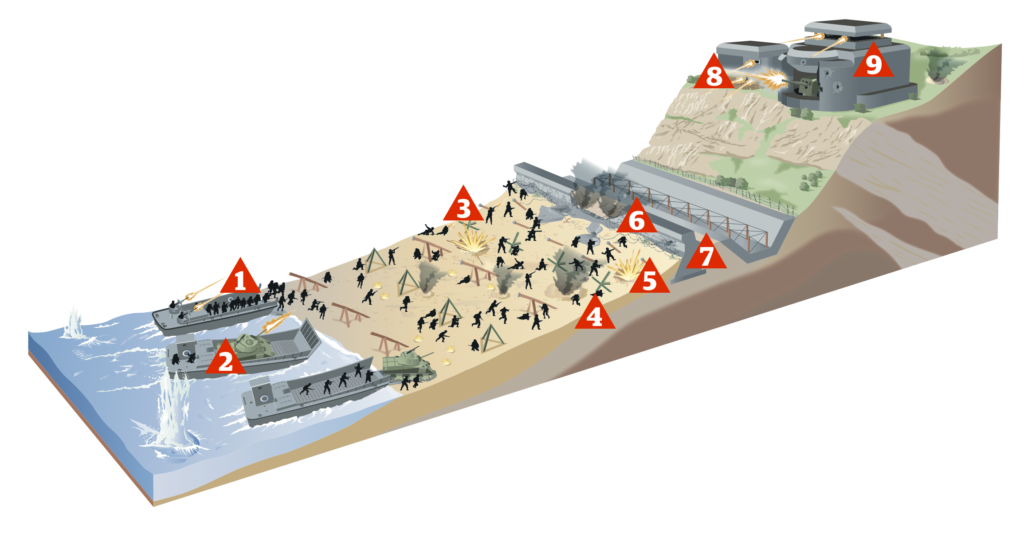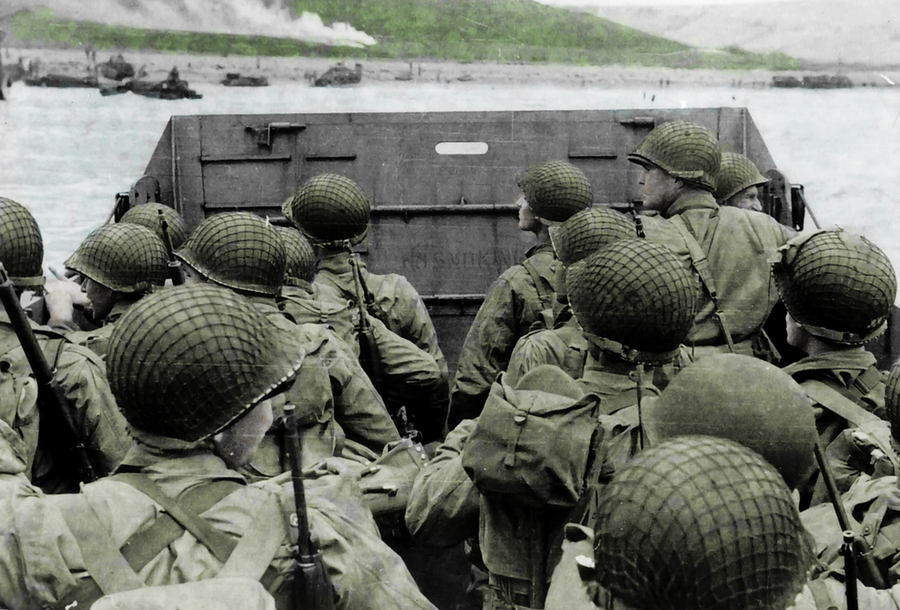Breaking down the toughest landing as the US forces faced embedded Nazi defences, mines, turrets, barbed wire and more
Subscribe to All About History now for amazing savings!

1. Allied troops
The heaviest fighting during D-Day is on Omaha beach as the German defences there remain undamaged from air attacks. An estimated 2,400 US soldiers die in the process of taking the beach.
2. Higgins boats
Flat-bottomed Higgins boats, or LCVPs (Landing Craft, Vehicle, Personnel) carry light vehicles or up to 100 men into the shallow water before lowering their ramps, their two .30-calibre machine guns blasting covering fire as the infantry disembark. Once the beach is secure, prefab Mulburry harbours will be assembled by engineers and larger LST (Landing Ship, Tank) will follow with heavier vehicles and equipment.
3. Teller mines
Mounted on stakes and ingeniously angled seaward toward the invaders, anti-vehicle Teller Mines can be triggered in high tide by landing craft. An anti-tampering device that can trigger the five kilograms of TNT if interfered with – enough to take the track off a tank.
4. Hedgehogs
Jagged balls of crossed rails make landing at high tide impossible lest the landing craft get snagged and tear a hole in the hull and slow down tanks. First used on the Czechoslovak border to deter German tanks, they’re sometimes called ‘Czech Hedgehogs’.
5. Land mines
Land mines can be buried beneath the sand to strike the unwary, with infantry mines triggered by a web of tripwires. S-mines, or ‘Bouncing Betties’, propel themselves 60-120cm (2-4ft) upward on a small explosive charge before the main charge explodes.
6. Barbed wire
Used in vast quantities along seawalls to deny the attackers cover, coils of vicious barbed wire can slow the Allies down as they carefully cut it or flatten it to cross – simple things made more difficult by the hail of machine-gun fire. Loose coils of wire are more difficult to cross as they snare on the unwary.
7. Seawall
The 3m (9.8ft) concrete seawall is as much protection against coastal erosion and unseasonably high tides as it is Allied assault, but it can make exiting the beach difficult for infantry and impossible for vehicles. However, it does provide the attackers with rare shelter from the German guns.
8. Machine-gun nest
Connected to the bunkers and pillboxes by trenches, machine-gun nests guard the trails off the beach, pinning down the attackers from their superior position with suppressing fire from the infamous MG42. Though vulnerable to bombardment by Allied ships and planes, only changing the ammo belt will afford the Allied infantry vital seconds with which to launch an attack.
9. Artillery casement
Safely encased in thick concrete, German artillery positions shell Allied ships approaching the beach. Taking them out prior to landing is a crucial part of the early bombardment from sea or air, as not even light tanks have the firepower to dent their shell. Infantry have to take out casements the hard way, getting under the guns to lob grenades into the closely packed rooms or storming the connecting trenches.
Originally published in All About History 13
Subscribe to All About History now for amazing savings!

